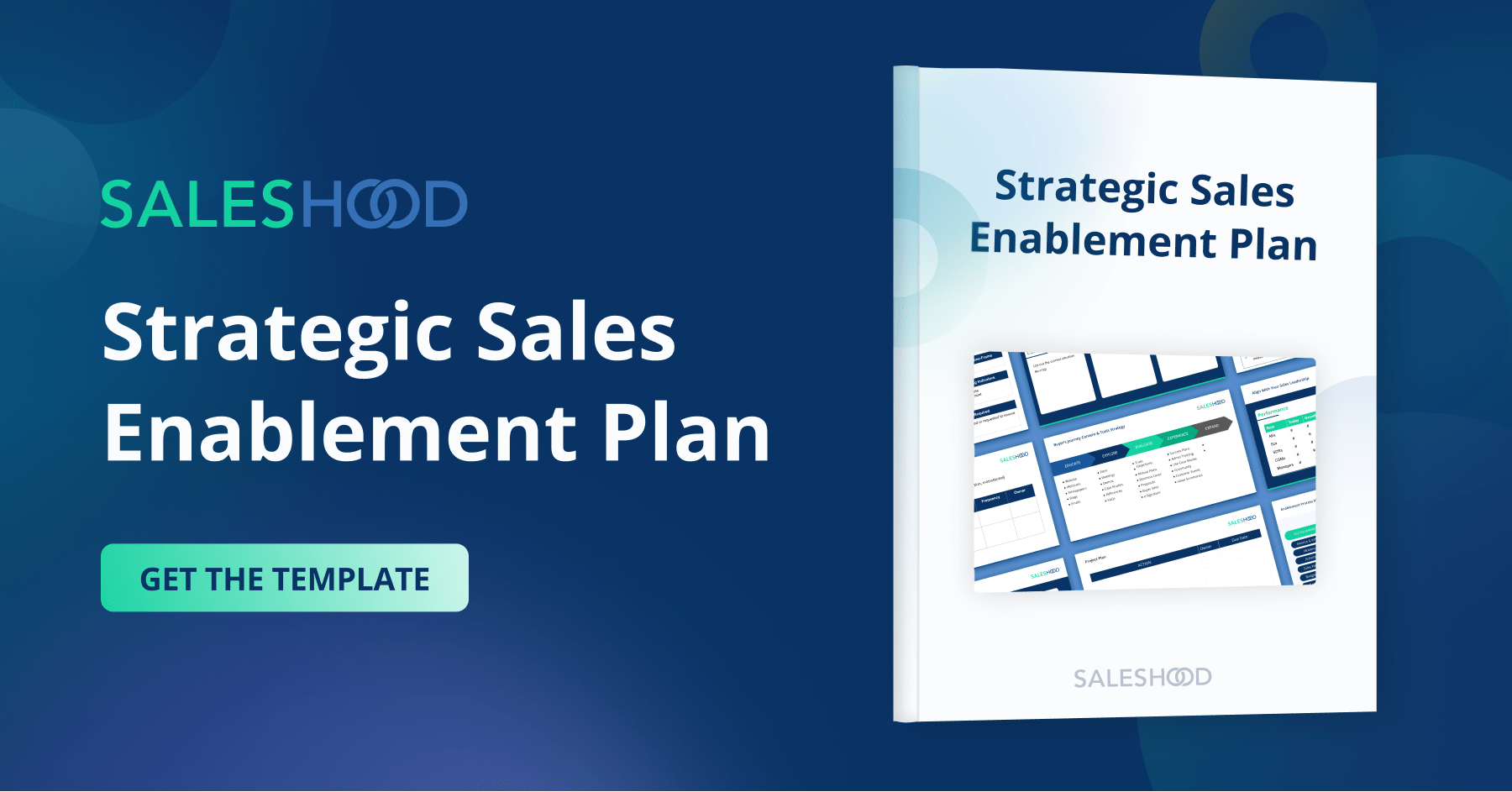Having a sales methodology is one factor that can help you establish a more successful sales process, and overall better sales results.
If you want a more comprehensive and useful sales methodology, you should consider what best suits your company. This sales methodology guide provides a list of the best sales methodologies and tips to help you decide which one is right for your business.
What Is A Sales Methodology?
In 1970 the first significant development in professional sales methodology occurred when Xerox established Professional Selling Skills (PSS). A more substantial enhancement to selling methodology happened in 1985 when Stephen Heiman and Robert Miller launched their book, Strategic Selling: The Unique Sales System.
A sales methodology is a structure of support that outlines the process of each sales stage and how your sellers make progress through the stages. It fosters a consistent sales process via best practices and a network of principles that dictate a seller’s actions throughout the sales cycle. Essentially, a sales methodology charts out an order of stages needed for sales success.
Whether it is working up for a sales call, upselling a big account, or evaluating an opportunity, the sales methodology expounds on how and what is behind the process. Moreover, it links the process to your customer or buyer’s needs and offers a roadmap for navigating each phase of the opportunity.
There should be a regular reinforcement and consistent application of your organization’s sales methodology to ensure its effectiveness. There must also be support coming through a universal language and formalized process, which supervises your organization’s sales affairs or activities. Furthermore, a sales methodology prepares your sales team with a scalable, repeatable, and practical supporting structure for sales success in your organization.
Benefits Of Empowering Your Team With Sales Methodology Training
There are significant benefits of implementing a sales methodology and empowering your sales team with it. Here are a few reasons why sales methodology training is beneficial to your company:
Enhanced Efficiency
Sales methodology training ensures that your sellers work more efficiently because established procedures guide how they sell and the questions they ask to uncover needs and establish alignment. The methodology serves as a guide for your sales team when interacting with customers.
More Developed Organization
Empowering your sales team with this kind of training aids your organization for a clear designation of every department’s roles related to sales.
Continuous Improvement
Through well-defined sales methodologies, you can empower and promote continuous improvement among your teams. Standardization helps in clarifying the needed development or supplementary skills for the success rate of your sales.
Sales Methodology vs. Sales Process
A sales process is a guideline that aids your sales reps in identifying the appropriate next steps to carry prospects through the buyer’s trip to that last scale. If you think that your sales process may appear different compared to other companies, that is fine. A sales process must be distinct to your business based on your customer base, product or service, market, and industry.
Before you begin searching and attaining a prospect, it is essential to set up a sales process because a defined procedure prevents any loose ends. With it, your sales team can obtain the right steps before them to find, nurture, and acquire a new customer.
On the contrary, a sales methodology focuses on a single area of the sales process. It sets up unique techniques based on your business’ culture, values, and goals rather than applying it to the whole sales cycle. It is more of a strategy and the “how” of your selling conceptual idea.
One of the sales process and sales methodology comparisons is that unlike a sales process that must be distinct for every business, there can be a utilization of the same sales methodology for many companies. This methodology mirrors you as a business and encourages you to concentrate on your business’ culture and values to manage the right sales and customer.
Sales Methodology Examples
There are several selling methodologies you can choose for your sales organization. When evaluating these different sales methods look for the one that best fits your organization’s goals, and stage, and the ability of your sellers. Your sellers may already be strong closers, which is a great sales skill to master, but having a system that sets a foundation for measurable, repeatable, and scalable growth multiplies abilities across all sellers. Implementing a sales methodology enables consistency and transforms uncertainty into success.
Here are examples of common sales methodologies which may work for your business:
- Selling Through Curiosity
- Target Account Selling
- MEDDPICC Sales Methodology
- The Challenger Sale
- Value Selling
- SPIN Selling
- SNAP Selling
- Miller Heiman
- Consultative Sales
- Sandler Selling System
- Inbound Selling
- Solution Selling
- Customer-Centric Selling
- Conceptual Selling
- N.E.A.T. Selling
Selling Through Curiosity
For over 30 years Selling Through Curiosity has been the most sought-after sales training and sales methodology for B2B saas organizations. This sales training program, created by Barry Rhein, helps sellers develop the natural curiosity that helps them easily achieve trusted advisor status with their customers and prospects. Selling Through Curiosity has been credited with producing billions of dollars in revenue and shareholder value.
Here’s what you can expect if you opt for this sales methodology:
- Increased Sales
- Reduced Discounting
- Growth in the average deal size
- New sales reps close their first sales quicker
- Experienced sales reps trim their sales cycle
- Fast results with proven ROI
We utilize Selling Through Curiosity in our sales enablement platform as our preferred sales methodology and see customer after customer quickly gain significant revenue increases after adopting Selling Through Curiosity while using SalesHood.
Target Account Selling (TAS Selling)
Target Account Selling (TAS) focuses on selling at an account level. Account-based selling focuses on selling to established accounts – not leads – which tends to be a repeatable, structured selling method that allows sales organizations to shorten their sales cycles, establish definite and unique business value with clients, and lessen selling costs by allocating resources efficiently.
This sales methodology can also increase the sales for each employee and construct a successful sales organization swiftly by assisting new employees to be productive, and quicker.
MEDDPICC Sales Methodology
The MEDDPICC sales method, also seen in common variations of MEDDICC, and MEDDIC, is a type of B2B sales model that focuses on the customer’s qualification. The MEDDPICC sales methodology’s primary concept is that better customer qualification results in higher sales closing rates.
The MEDDPICC sales methodology stands for the following:
- Metrics: What’s the measurable effect of the situation?
- Economic buyer: Who directs the appropriate budget?
- Decision criteria: What are the formal assessment criteria that the organization uses to pick a vendor?
- Decision process: How does the organization make its decisions?
- Identify pain: What is the ruling pain point? What is the financial consequence of not addressing it?
- Champion: Who is selling on your behalf?
This sales methodology operates more technologically and needs tight jurisdiction of the sales process or sales cycle. Read more about MEDDPICC sales methodology here.
The Challenger Sales Methodology
The Challenger Sales Method, created by Matthew Dixon and Brent Adamson, is a selling system that knocks conventional relationship selling on its head and instead relies on communicating unique insights and a tailored message to customers that meet their needs. Rather than answering questions, the seller takes a more assertive approach to pushing back and controlling the sales through until close.
You can use this sales approach when selling in complicated B2B sales settings so that the sales reps can manage and control the conversation to enlighten customers on your company’s distinct strengths.
Value-Based Selling (Value Selling)
Value selling is a sales method that leverages the customer’s anticipation of appreciating a product’s long-term value. The value-based selling method focuses on making the customers feel as if they are receiving long-term value that eclipses an upfront cost – the product is an investment rather than just a purchase or expense.
When executed properly this type of selling and the sales conversation emphasizes how the benefits of the product will improve the buyer’s life using the asset at hand vs the actual features and facts regarding the product, and offers a personalized, lasting commitment that the buyer will receive maximum value and repayment in return of purchase.
SPIN Selling
Neil Rackham designed the SPIN selling method in 1988 according to research out of 35,000 sales calls. SPIN Selling or SPIN sales methodology aids the sales reps to ask the correct questions to determine how to serve the best solution and sell it to your buyer.
SPIN selling represents the four types of questions that salespeople must ask their customers:
- Situation questions
- Problem questions
- Implication questions
- Need-Payoff questions
These queries distinguish the buyer’s pain points and challenge them to create a good rapport among the seller and customer. This selling method’s utilization is best when the prospect has not identified their pain points or does not entirely understand what it means yet.
SNAP Selling
In her best-selling book, SNAP Selling: Speed Up Sales and Win More Business With Today’s Frazzled Customers, Jill Konrath established SNAP Selling. This sales methodology by Jill Konrath aims to tackle too little time and too much information for a buyer to decide. A salesperson needs to go straight to the heart of the dilemmas with this fast-paced sales setting. SNAP selling sticks to its four principles, which are:
S – Keep it simple
To make it uncomplicated for your prospects to close the deal, lessen the effort and difficulty in the decision-making process.
N – Be invaluable
Emphasize and present the value your offered solution gives to shine among the sea of options battling for the prospect.
A – Always align
There should be alignment in your conversations and solutions with your prospect’s needs and goals so that you can continue to be relevant.
P – Raise priorities
It can help if you raise priorities by creating urgency over your solution and demonstrating why your prospect must treat the issue as more important.
SNAP selling as a comprehensive method helps a sales rep acknowledge their customers and the sales environment to address their needs and to immediately go further with expectations
Miller Heiman Strategic Selling
The Miller Heiman Strategic Selling process is a consistent and repeatable sales approach that helps identify winning opportunities and adds value to customer relationships while simplifying a complex, multiple-person sales process. Miller Heiman’s sales methodology is famously known for the Miller Heiman blue sheet–a resource that sits at the center of this selling approach.
Strategic Selling focuses on a three-step solution that teaches sellers how to navigate several influencers in a pitch and understand how to personalize the sell to each of them. First, you determine your why questions and then you enter the three stages. These stages include:
- Categorizing the different contacts / roles by their influence on the sales cycle
- Determining each of these contacts / roles level of support and their level of opposition to your proposal
- Working both sides of the contacts / roles to influence them and help them reach your desired consensus on a buying decision
By analyzing the people involved in the decision at the organization, each of their characteristics and how they may influence a sale, the seller creates an overview to recognize strengths and weaknesses and potential arguments of each person involved in the sales process. This empowers presenting solutions in a way that resonates with each specific person’s strengths, weaknesses and satisfies their objections – both corporate and personal.
Consultative Sales Methodology
Consultative sales methodology is hyper-focused on the customers – not the product being sold. The consultative sales methodology prioritizes relationships and open dialogue to determine the customer’s needs and provide them with a solution to their needs.
This sales method helps sales professionals understand customers’ challenges better to place their offered solutions more compellingly.
Sandler Selling System
In 1967, David Sandler developed the Sandler sales methodology, also known as the Sandler Selling System, and it still remains a significant and widespread sales method now. It highlights building a relationship and customer qualification. This thought places sales reps as trusted consultants instead of hostile salespeople. These are the fundamental steps of the Sandler selling model:
- Build a relationship.
- Qualify the opportunity.
- Close the sale.
This sales method stands out at creating a strong customer relationship that can result in sales wherein the buyer can feel as if the deal was their thought initially. Also, Sandler’s sales methodology is an excellent foundation that incorporates well with various sales environments.
Inbound Selling
Inbound selling focuses on leading prospects to your company instead of carrying out a targeted outreach approach. Here, an inbound salesperson concentrates on identifying pain points, understanding the buyer’s journey, teaching and acting as a reliable consultant, and designing a unique solution.
One of the advantages of inbound selling is its less invasive, cost-efficient approach that shows interest leads to what you are selling. You can use this method at its best when partnered with an inbound marketing strategy. If you decide on an inbound sales process implementation, you have to ensure your company’s alignment across your teams to succeed.
Solution Selling
Another commonly used sales methodology is Solution Selling, which was created by Frank Watts in 1975 and popularized by Michael Bosworth when he founded the sales training organization, Solution Selling, in 1983. With Solution Selling, sales reps identify pain or particular issues and needs that the buyer encounters and suggest a product or service as a solution.
One high point of this sales model is that it keeps the conversation away from the usual product specification, and instead, it tackles the value that the solution brings to the buyer. If you focus more on how your product or service solves issues and satisfy their needs, you can place your business as advisers instead of pushy salespeople.
Solution selling became extremely popular because it’s based on a simple premise of determining a need and recommending a solution. It’s a solution that focuses on developing empathy and trust with a customer.
Customer-Centric Selling
Customer-centric selling was developed by Michael Bosworth, John Holland and Frank Visgatis. Customer-centric Selling focuses on creating a great customer experience to ensure you stand out from the competition. This sales method advocates meaningful communication to determine the prospects’ needs and find the right solution to solve their pain points. Customer-centric selling leads sellers to target principal decision-makers and ask questions to comprehend their case, align with their needs, and provide an appropriate solution.
Here are the following eight components of customer-centric selling:
- Converse situationally rather than making presentations
- Ask appropriate questions compared to offering opinions.
- Solution-focused instead of relationship-focused
- Target decision-makers instead of users
- Promote the use of products to obtain interest rather than promoting only the product.
- Concentrate on becoming the best seller instead of the busiest
- Close on the buyer’s timeline instead of the seller’s
- Empower a buyer to purchase rather than convincing them to buy
Conceptual Selling
Conceptual Selling is a widely-used Miller Heiman selling methodology based on listening and fully understanding the customer’s pain points. This sales model encourages a salesperson to research and actively listen to their buyer to create a mutual benefit in a customer-seller relationship rather than leading with a sales pitch.
In the old days of selling salespeople were talkers focused on talking about the features of their service or product – not to listen – whereas conceptual selling is designed to extract as much information as possible then relates the product or service directly to that concept.
Conceptual selling is best when working in an organization or industry that offers highly customized products and services.
N.E.A.T. Selling
N.E.A.T. Selling is a sales methodology that is rarely used anymore across organizations. It utilizes a strategy of focusing on pinpointing a prospect’s most essential needs and pain points and acknowledging and fully understanding those while positioning your products as a solution. N.E.A.T. stands for:
- Need
- Economic impact
- Access to authority
- Timeline
The N.E.A.T. Selling model concentrates on listening and understanding over speaking so sales organizations consider it more functional as a lead qualification process to determine whether or not a buyer is a good fit for the solution you offer.
How To Choose The Right Sales Methodology
Your sales methodology must suit your customer, market, and product or service. If any contrasting conditions happen, it can be unusual for both the customer and sales reps, leading to a negative effect. It can help if you note that you must first determine your needs and then distinguish the best sales methodology to give your issues the best solution.
Regardless of all the fancy and different names of sales methodologies, there are only five methods that govern B2B sales, which are the following:
- DIY Self Service
With DIY self-service, a complete web experience from start to finish is present in this sales methodology wherein the customer or buyer teaches themselves and finalizes their online purchase. - Transactional Selling
This method of selling helps a customer purchase the solution they chose themselves, mostly through researching online. Usually, these types of customers are in a rush and prepared to buy. - Solution Selling
In solution selling, the customers already acknowledge and understand their dilemma and want the sales to undertake particular problems through products or services. The clients purchase in days to weeks in this selling system. - Consultative Sales Methodology
In a consultative sales methodology, the buyer does not entirely understand the issue. The sales have to discover the buyer’s situation to identify the needs and give the correct solution. One should know that it can take up to 6 to 18 months. - Provocative Selling
Before the customer knows, the sales expert can determine the customers who will encounter a problem and provoke the principal client into action. The application of this selling as of the best B2B sales methodology is typically on an innovative solution and can take around 3 to 9 months.
Many individuals select sales methods according to what they find convincing, flashy, or new, which is wrong for decision-makers. It requires care and skills to create a balance between a too simple or too complex solution. However, you can begin with a note of your business’ sales cycle, average deal size, and several deals for each sales rep every month.
Tips For Choosing A Sales Methodology For Your Organization
Selecting sales methods is one of the most vital decisions your business can make to operate a booming and reliable market. Each company must obtain a documented sales methodology recognized by every part of onboarding or training, sales reps, and strengthened by leaders and managers.
A sales methodology’s foundation is observing the sales phases and answering the sales process queries at every stage. From the steps and procedures, everything circulates.
In some cases, several businesses add or shorten a few steps, and the label of those stages must depict your business. Also, you will find that nearly all sales methodologies obtain a set of procedures and questions. Here are four operational tips for asking within your organization when you choose your sales methodology.
- How does the sales methodology work with the sales automation system?
- What do the reporting & forecasting processes look like?
- How useful are the sales tools at building scale?
- What are the provided reinforcement training and onboarding?
How Do You Implement A Sales Methodology?
After recognizing the different sales methodologies, the first thing you should do is choose the right one for your company. Once you have decided and selected your sales methodology, these are the things you must do for its implementation:
- Make a sales playbook to provide support for your sales methodology.
- Teach your current team members regarding the new sales methods
- Integrate training through your latest hire onboarding items
Manage periodic refresher training through workshops or lunch and learn to guarantee that there are correct acquisition and utilization of the sales methodology in progress.
During coaching, deal strategy sessions, pipeline reviews, and opportunity huddles, you should lean on your chosen sales methodology.
If you don’t include your sales methodologies in your organization’s sales culture and not make it a part of your communication every day, it may fail. Being the sales leader, you must ensure the success of your sales method.
No matter what sales methodologies you use out of the many popular sales methodologies out there, remember that the means to a successful sales model is regular and consistent sales training and reinforcement. Take note of the sales methodology’s best procedures to keep your team updated and incorporate the sales model into your organization’s culture and structure.



